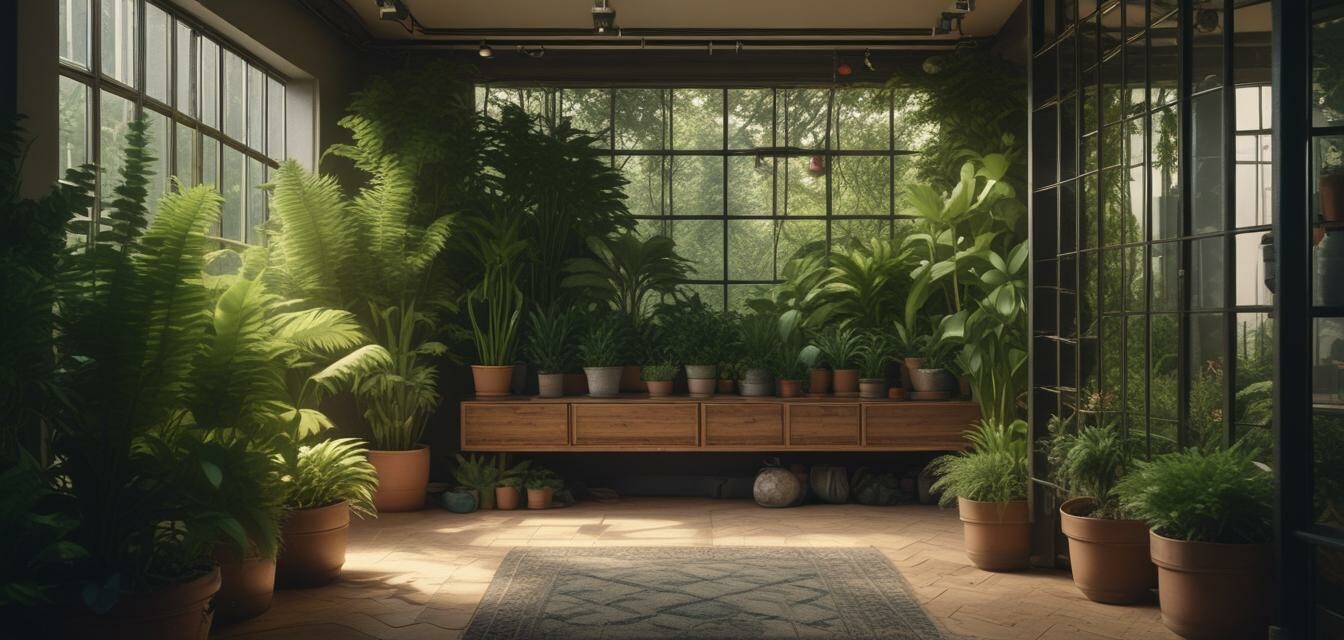
Indoor Gardening Trends for 2025
Key Takeaways
- Rise of hydroponic and vertical gardening techniques.
- Increased popularity of plant subscription services.
- Emphasis on sustainable and eco-friendly gardening products.
- Enhanced focus on multi-functional furniture for small spaces.
- Integration of technology in indoor gardening practices.
As we look ahead to 2025, indoor gardening continues to evolve, shaping the way we interact with nature within our urban environments. The trends this year highlight innovation in growing techniques, the introduction of smart gadgets, and a greater emphasis on sustainability. In this comprehensive guide, we’ll explore the upcoming trends that are set to redefine indoor gardening.
1. The rise of hydroponic gardening
Hydroponic gardening allows individuals to grow plants without soil. Utilizing nutrient-rich water solutions, this method maximizes space and enables faster growth rates. In 2025, we can expect:
- More compact systems designed for small apartments.
- Improved technology that makes hydroponics easier for beginners.
- Integration of hydroponic systems into existing furniture.
2. Vertical gardening techniques
Vertical gardening continues to gain momentum as city-dwellers seek to maximize their limited space. Benefits include:
- Efficient use of vertical space for growing a variety of plants.
- Improved air quality as plants cover walls and surfaces.
- Artistic designs that enhance the aesthetics of indoor spaces.
3. Subscription services for plants
The convenience of plant subscription services is transforming how we acquire new plants. Customers can expect:
- Regular delivery of seasonal plants directly to their doorstep.
- Customized selections based on individual preferences and space.
- Access to rare plant varieties that may not be available locally.
4. Eco-friendly and sustainable products
Sustainability is at the forefront of gardening in 2025. Expect to see:
- Products made from recycled materials.
- Organic and biodegradable gardening supplies.
- Technologies that consume less energy and water.
5. Multi-functional indoor gardening furniture
With urban spaces becoming more compact, multi-functional furniture is essential. Look for:
- Furniture that incorporates planters within its design.
- Creative storage solutions for gardening tools.
- Tables and shelves designed to maximize light exposure for plants.
6. Technology integration in gardening practices
Smart gardening tools are making gardening more efficient. Innovations include:
- App-controlled watering systems that ensure the right amount of water.
- Smart sensors that monitor plant health and environmental conditions.
- Integration of LED grow lights that mimic natural sunlight.
7. Growing edible plants indoors
As more people embrace cooking at home, growing edible plants is on the rise. Expect to see:
- A focus on herbs and microgreens that can be grown year-round.
- Innovative containers designed for easy access to fresh produce.
- Educational resources that help beginners start their edible garden.
Conclusion
2025 is set to bring exciting advancements in indoor gardening, influenced by technology, sustainability, and creative living solutions. Whether you are an experienced gardener or just getting started, these trends are set to make indoor gardening more accessible and enjoyable for everyone. For more tips and ideas on urban gardening, check out our gardening tips section or explore container gardening methods that fit your space.
Pros
- Maximizes limited space in urban homes.
- Enhances air quality inside apartments.
- Provides fresh produce year-round.
- Encourages creativity and personal expression.
Cons
- Requires initial investment in systems and tools.
- Maintenance can be challenging for beginners.
- Some plants may need specific conditions to thrive.
Tips for getting started with indoor gardening
- Start with low-maintenance plants.
- Choose the right location for natural light exposure.
- Invest in quality soil and pots for better plant health.
- Experiment with different plant types to see what works best.
- Connect with local gardening communities for support and ideas.